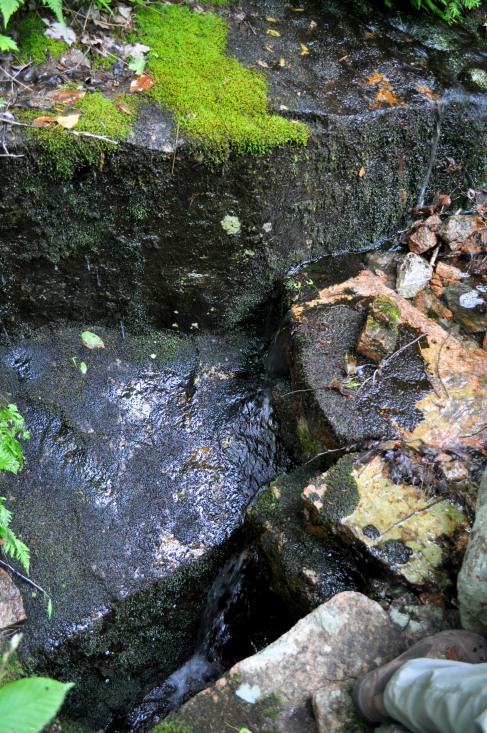At the start of this week, we divided ourselves into three teams of two and selected the carriage roads that we would inventory. After attending morning lectures, we headed out into the field with our measuring equipment and cameras. The weather was beautiful as we made our way through Acadia’s lush green forests and rocky mountainsides. Thanks to the help of Jeff Killion from the NPS Olmsted Center for Landscape Preservation we successfully practiced and refined our data collection methods. In the evenings, we worked together to digitally record all of our collected measurements, notes, and images.
One of our morning lectures included a tour of the Acadia National Park archives with Robyn King, a National Park Service museum technician. We were all impressed by the size and scope of the collection which included preserved natural history specimens, photographs, personal letters, artwork, and household items from the turn of the 20th century. Each object told its own story about Acadia and Mount Desert Island. These stories reinforced all that we were learning about the history of this place.
Our knowledge of Acadia National Park and Mount Desert Island were also broadened through lectures on land used and regional planning by SUNY ESF professor Margaret Bryant and park planner John Kelly. It was fascinating to learn about the important decisions and relationships necessary to manage such an iconic and historic landscape. We also saw how planners utilize GIS to map out and articulate their data. This gave us a very useful context for how the information gathered through our inventory work will help park officials, park advocates, and local authorities better preserve and maintain the historic carriage roads for present and future generations to enjoy.
This past Sunday, a few of the Acadia Six decided to take an adventure on a local sailboat, The Margaret Todd. About two hours in length, our sunset journey around the bay proved to be quite exciting. We listened to a soothing acoustic guitar performance and sailed through the local bay, leaving the beautiful sights of Bar Harbor and Cadillac Mountain behind. As we relaxed from our busy week on the tranquil waters, all our troubles drifted away. We met a couple from New Hampshire who frequently visit Acadia and they enjoyed hearing about our Cultural Landscape Inventory project.
Full of laughs and relaxation… our short journey proved to be worthwhile 🙂
For full journey pictures see our Facebook page: http://www.facebook.com/AcadiaNationalParkSummerFieldSchool12
This blog is an opportunity for the students of the 2012 National Park Service Field School to document our experiences and share what we are learning with a wider audience. There are six of us in total with an even mix of undergraduate and graduate students.
We began our journey in Boston, MA visiting Boston National Historic Park and Boston Harbor Islands National Recreation Area. Exploring these parks we gained a deeper understanding of how the National Park Service works with public and private partnerships to preserve and protect places that tell important stories about natural and cultural history. Afterwards we collectively traveled to Mount Desert Island, ME to settled into our new home away from home on the campus of the College of the Atlantic.
At the close of our first week here, we have gotten to better know each other, the unique beauty of Acadia National Park, the history of Mount Desert Island, and the carriage road inventory project that we will be completing in the weeks ahead.





